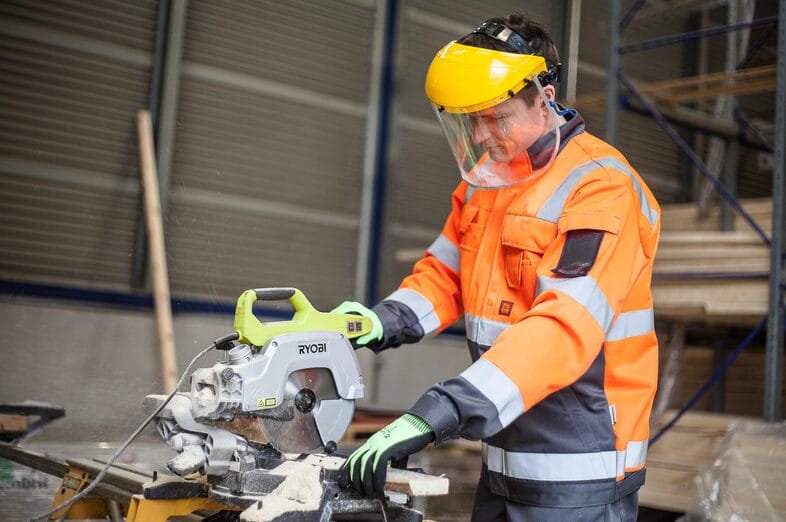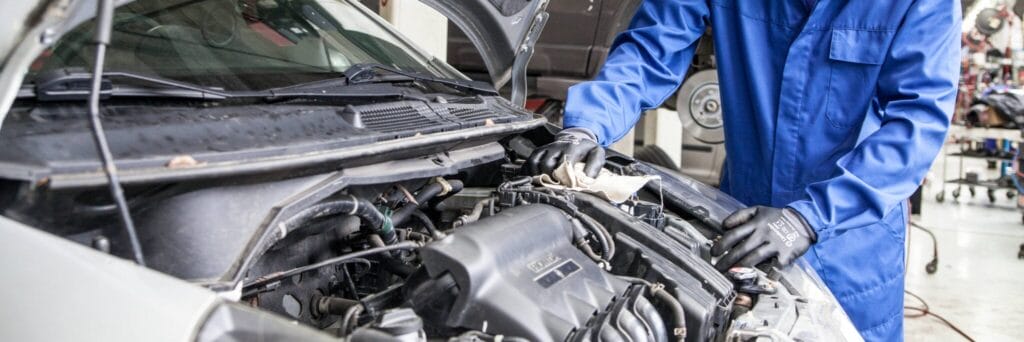
Anti-Static & Arc Flash Clothing: A Guide for Industrial Safety
Electrostatic discharges (ESD) and arc flash incidents can cause devastating injuries, fires, or explosions in high-risk work environments.
For industries handling flammable substances or sensitive electronics, wearing the correct anti-static clothing is not just a recommendation—it’s a legal and operational necessity.
This guide explains how anti-static workwear works, what standards it must meet, and how it differs from arc flash PPE. Whether you’re an HSE manager or a procurement lead, this resource will help you choose the right protective workwear for your team.
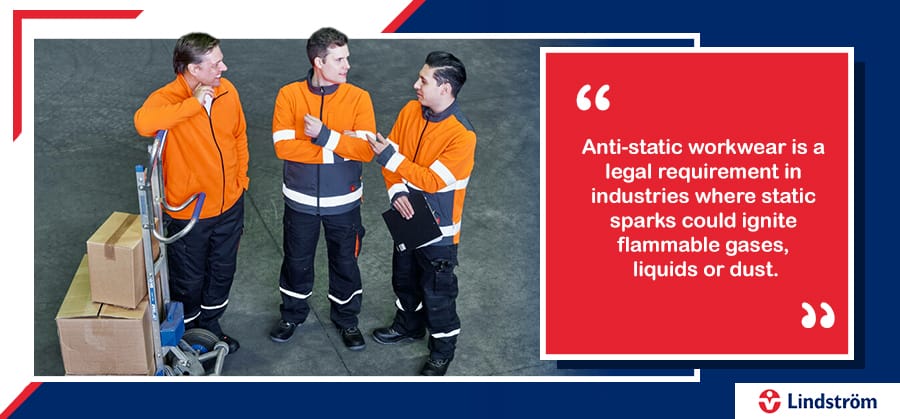
What Is Anti-Static Workwear?
Anti-static workwear is designed to prevent the build-up and sudden discharge of static electricity.
In many work environments, particularly where flammable vapours or dust are present, static sparks can ignite explosions or fires.
These garments are made from fabrics woven with conductive fibres that safely dissipate electrostatic charges into the atmosphere or ground. For the clothing to work effectively, it must:
- Be worn as a complete set (e.g. anti-static jackets and anti-static trousers)
- Cover all non-compliant layers underneath
- Be used in conjunction with anti-static footwear or ESD (Electrostatic Discharge) accessories like gloves
In sectors dealing with dual hazards (e.g. electrical work and flammable substances), anti-static clothing is often combined with flame-resistant materials to meet both protection needs.
How Does Anti-Static Workwear Work?
Static electricity is generated when two surfaces rub together—common in workplaces involving friction, synthetic materials, or movement. If discharged in a high-risk zone, this can result in:
- Electrical sparks
- Fires
- Explosions
- Equipment failure
Anti-static garments reduce this risk by:
- Preventing charge build-up on the garment’s surface
- Allowing the charge to flow safely to ground
- Maintaining controlled resistance levels in line with EN 1149-5
Modern anti-static flame retardant workwear also protects against secondary hazards, such as arc flash, through dual-layer construction.
What Is Arc Flash Safety?
An arc flash is a sudden, high-energy electrical discharge caused by a fault in an electrical system. Temperatures can exceed 19,000°C, creating blasts powerful enough to:
- Melt clothing and metal
- Cause fatal burns
- Project molten material and pressure waves
Arc-rated PPE (AR/FR clothing) is tested to withstand these forces and includes:
- Flame retardant jackets and trousers
- Arc-flash overalls
- Protective balaclavas and visors
If you work with live electricity or in substations, IEC 61482-2 compliant clothing is essential. Many environments require clothing that meets both arc flash and anti-static regulations.
Where Is Anti-Static Clothing Required?
Anti-static and arc flash protective garments are essential in any industry where static discharge could:
- Ignite flammable substances
- Damage sensitive components
- Cause bodily harm or death
Common sectors:
- Electronics and microchip manufacturing (ESD zones)
- Oil, gas, and petrochemicals
- Mining.
- Chemical processing
- Utilities and energy generation
- Paint, coatings, and printing
Any environment with combustible dust, liquids, or pressurised gases can benefit from anti-static protective solutions.
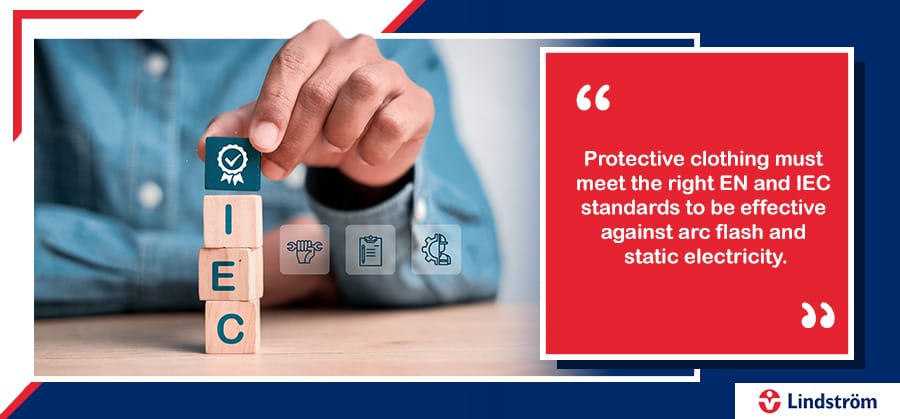
What Standards Should Anti-Static Workwear Meet?
Look for garments tested and certified to the following standards:
| Standard | What It Covers |
| EN 1149-5 | Electrostatic dissipative clothing |
| EN ISO 11612 | Flame-resistant materials |
| IEC 61482-2 | Arc flash protection |
| EN 13034 | Chemical splash protection (optional in some roles) |
Anti-static clothing should be clearly labelled with EN codes. Ensure your supplier is certified, and that garments are washed and handled in accordance with the manufacturer’s specifications to preserve their performance.
Key Features to Look For
When selecting anti-static PPE, consider:
- Breathable fabrics that are durable and comfortable for long shifts
- Reflective tape for visibility in low-light settings
- Smart design with pocket placement and flexible fit
- Size inclusivity for all workers, regardless of shape or height
- Custom branding and colour options to maintain a professional look
Garments must be worn correctly to offer full protection. Ensure employees are trained in how to dress appropriately and avoid combining these garments with non-compliant accessories (e.g. synthetic underlayers or metal zippers).
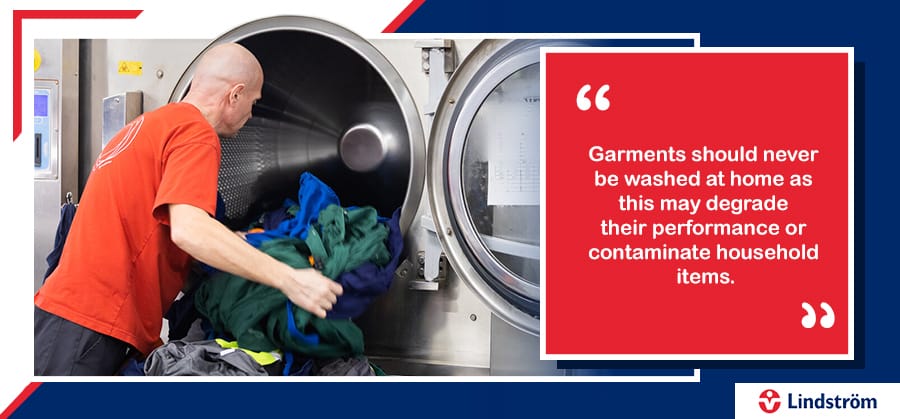
Anti-Static Safety Tips for Employers
Employers are responsible for providing the correct PPE and ensuring its ongoing compliance. Here are best practices for safe use:
- Use full-body coverage to avoid exposure through uncovered areas
- Ground personnel with ESD footwear or flooring systems
- Avoid synthetic base layers that hold charge
- Replace garments that are damaged, worn out or contaminated
- Regularly inspect and launder clothing professionally
Garments should never be washed at home as this may degrade their performance or contaminate other household items.
Why Use a Workwear Rental Service?
Managing compliance internally can be costly and time-consuming. A workwear rental and laundry service provides peace of mind by:
- Ensuring garments are washed to maintain certification
- Replacing damaged items before they compromise safety
- Handling inventory, storage, and repairs
- Offering regular collection and delivery tailored to your shift cycles
Lindström’s anti-static workwear rental service includes EN-certified garments, expert laundering, and ongoing quality assurance.
This helps your business remain safe, compliant, and operationally efficient—without the admin burden.
Final Thoughts
In workplaces with arc flash or electrostatic risks, anti-static PPE is a first line of defence. Understanding how this clothing works—and maintaining it properly—is essential for both legal compliance and the wellbeing of your workforce.
Whether your team operates in explosive environments or static-sensitive zones, the right anti-static and flame-retardant workwear can make all the difference.
Contact us to learn more about compliant protective clothing rental for your business.

